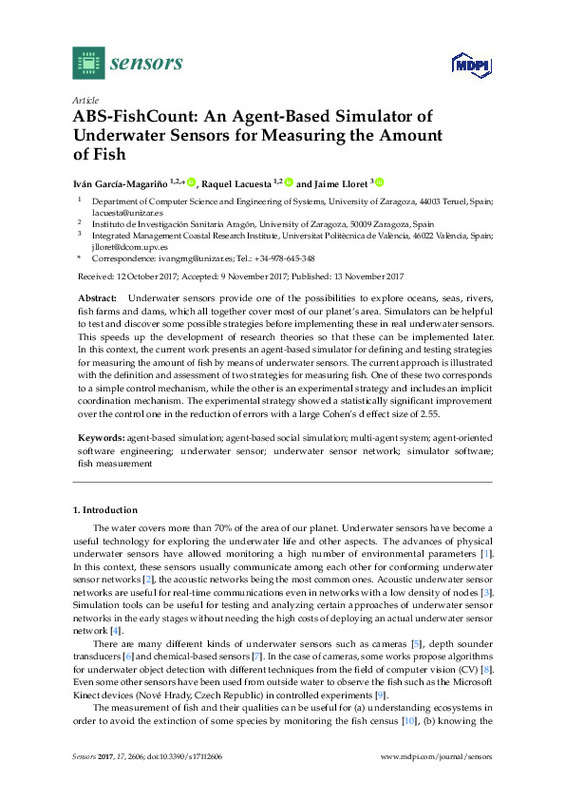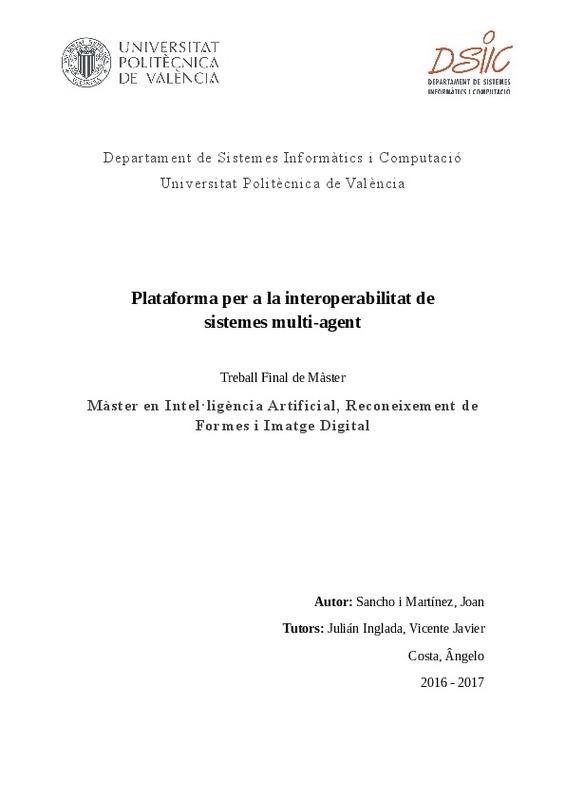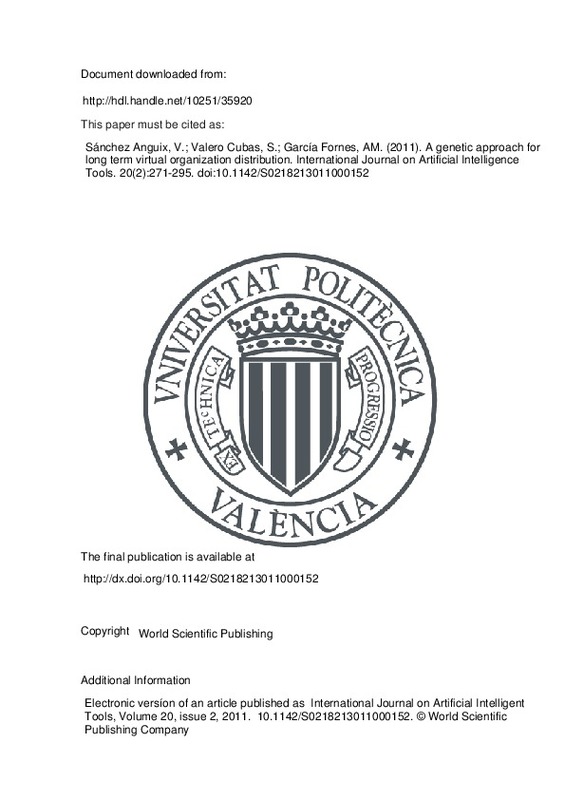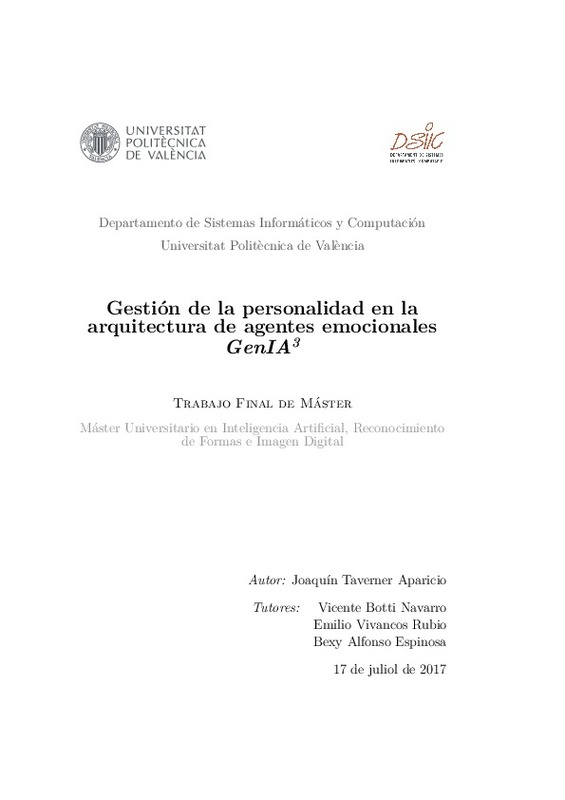JavaScript is disabled for your browser. Some features of this site may not work without it.
Buscar en RiuNet
Listar
Mi cuenta
Estadísticas
Ayuda RiuNet
Admin. UPV
ABS-FishCount: An Agent-Based Simulator of Underwater Sensors for Measuring the Amount of Fish
Mostrar el registro sencillo del ítem
Ficheros en el ítem
| dc.contributor.author | García-Magariño, Iván
|
es_ES |
| dc.contributor.author | Lacuesta Gilabert, Raquel
|
es_ES |
| dc.contributor.author | Lloret, Jaime
|
es_ES |
| dc.date.accessioned | 2020-07-30T03:35:44Z | |
| dc.date.available | 2020-07-30T03:35:44Z | |
| dc.date.issued | 2017-11-13 | es_ES |
| dc.identifier.uri | http://hdl.handle.net/10251/148910 | |
| dc.description.abstract | [EN] Underwater sensors provide one of the possibilities to explore oceans, seas, rivers, fish farms and dams, which all together cover most of our planet's area. Simulators can be helpful to test and discover some possible strategies before implementing these in real underwater sensors. This speeds up the development of research theories so that these can be implemented later. In this context, the current work presents an agent-based simulator for defining and testing strategies for measuring the amount of fish by means of underwater sensors. The current approach is illustrated with the definition and assessment of two strategies for measuring fish. One of these two corresponds to a simple control mechanism, while the other is an experimental strategy and includes an implicit coordination mechanism. The experimental strategy showed a statistically significant improvement over the control one in the reduction of errors with a large Cohen's d effect size of 2.55. | es_ES |
| dc.description.sponsorship | This work acknowledges the research project Desarrollo Colaborativo de Soluciones AAL with reference TIN2014-57028-R funded by the Spanish Ministry of Economy and Competitiveness. This work has been supported by the program Estancias de movilidad en el extranjero José Castillejo para jóvenes doctores funded by the Spanish Ministry of Education, Culture and Sport with reference CAS17/00005. We also acknowledge support from Universidad de Zaragoza , Fundación Bancaria Ibercaja and Fundación CAI in the Programa Ibercaja-CAI de Estancias de Investigación with reference IT24/16. We acknowledge the research project Construcción de un framework para agilizar el desarrollo de aplicaciones móviles en el ámbito de la salud funded by University of Zaragoza and Foundation Ibercaja with grant reference JIUZ-2017-TEC-03. It has also been supported by Organismo Autónomo Programas Educativos Europeos with reference 2013-1-CZ1-GRU06-14277. We also aknowledge support from project Sensores vestibles y tecnología móvil como apoyo en la formación y práctica de mindfulness: prototipo previo aplicado a bienestar funded by University of Zaragoza with grant number UZ2017-TEC-02. Furthermore, we acknowledge the Fondo Social Europeo and the Departamento de Tecnología y Universidad del Gobierno de Aragón for their joint support with grant number Ref-T81. | es_ES |
| dc.language | Inglés | es_ES |
| dc.publisher | MDPI AG | es_ES |
| dc.relation.ispartof | Sensors | es_ES |
| dc.rights | Reconocimiento (by) | es_ES |
| dc.subject | Agent-based simulation | es_ES |
| dc.subject | Agent-based social simulation | es_ES |
| dc.subject | Multi-agent system | es_ES |
| dc.subject | Agent-oriented software engineering | es_ES |
| dc.subject | Underwater sensor | es_ES |
| dc.subject | Underwater sensor network | es_ES |
| dc.subject | Simulator software | es_ES |
| dc.subject | Fish measurement | es_ES |
| dc.subject.classification | INGENIERIA TELEMATICA | es_ES |
| dc.title | ABS-FishCount: An Agent-Based Simulator of Underwater Sensors for Measuring the Amount of Fish | es_ES |
| dc.type | Artículo | es_ES |
| dc.identifier.doi | 10.3390/s17112606 | es_ES |
| dc.relation.projectID | info:eu-repo/grantAgreement/UNIZAR//JIUZ-2017-TEC-03/ | es_ES |
| dc.relation.projectID | info:eu-repo/grantAgreement/MECD//CAS17%2F00005/ | es_ES |
| dc.relation.projectID | info:eu-repo/grantAgreement/OAPEE//2013-1-CZ1-GRU06-14277/ | es_ES |
| dc.relation.projectID | info:eu-repo/grantAgreement/Gobierno de Aragón//Ref-T81/ | es_ES |
| dc.relation.projectID | info:eu-repo/grantAgreement/MINECO//TIN2014-57028-R/ES/DESARROLLLO COLABORATIVO DE SOLUCIONES AAL/ | es_ES |
| dc.relation.projectID | info:eu-repo/grantAgreement/Fundación Bancaria Ibercaja//IT24%2F16/ | es_ES |
| dc.relation.projectID | info:eu-repo/grantAgreement/UNIZAR//UZ2017-TEC-02/ | es_ES |
| dc.rights.accessRights | Abierto | es_ES |
| dc.contributor.affiliation | Universitat Politècnica de València. Departamento de Comunicaciones - Departament de Comunicacions | es_ES |
| dc.description.bibliographicCitation | García-Magariño, I.; Lacuesta Gilabert, R.; Lloret, J. (2017). ABS-FishCount: An Agent-Based Simulator of Underwater Sensors for Measuring the Amount of Fish. Sensors. 17(11):1-19. https://doi.org/10.3390/s17112606 | es_ES |
| dc.description.accrualMethod | S | es_ES |
| dc.relation.publisherversion | https://doi.org/10.3390/s17112606 | es_ES |
| dc.description.upvformatpinicio | 1 | es_ES |
| dc.description.upvformatpfin | 19 | es_ES |
| dc.type.version | info:eu-repo/semantics/publishedVersion | es_ES |
| dc.description.volume | 17 | es_ES |
| dc.description.issue | 11 | es_ES |
| dc.identifier.eissn | 1424-8220 | es_ES |
| dc.identifier.pmid | 29137165 | es_ES |
| dc.identifier.pmcid | PMC5713010 | es_ES |
| dc.relation.pasarela | S\376365 | es_ES |
| dc.contributor.funder | Gobierno de Aragón | es_ES |
| dc.contributor.funder | European Social Fund | es_ES |
| dc.contributor.funder | Universidad de Zaragoza | es_ES |
| dc.contributor.funder | Fundación Caja Inmaculada | es_ES |
| dc.contributor.funder | Fundación Bancaria Ibercaja | es_ES |
| dc.contributor.funder | Ministerio de Economía y Competitividad | es_ES |
| dc.contributor.funder | Ministerio de Educación, Cultura y Deporte | es_ES |
| dc.contributor.funder | Organismo Autónomo Programas Educativos Europeos | es_ES |
| dc.description.references | Lloret, J. (2013). Underwater Sensor Nodes and Networks. Sensors, 13(9), 11782-11796. doi:10.3390/s130911782 | es_ES |
| dc.description.references | Akyildiz, I. F., Pompili, D., & Melodia, T. (2005). Underwater acoustic sensor networks: research challenges. Ad Hoc Networks, 3(3), 257-279. doi:10.1016/j.adhoc.2005.01.004 | es_ES |
| dc.description.references | Santos, R., Orozco, J., Micheletto, M., Ochoa, S., Meseguer, R., Millan, P., & Molina, C. (2017). Real-Time Communication Support for Underwater Acoustic Sensor Networks. Sensors, 17(7), 1629. doi:10.3390/s17071629 | es_ES |
| dc.description.references | Das, A. P., & Thampi, S. M. (2017). Simulation Tools for Underwater Sensor Networks: A Survey. Network Protocols and Algorithms, 8(4), 41. doi:10.5296/npa.v8i4.10471 | es_ES |
| dc.description.references | Kawahara, R., Nobuhara, S., & Matsuyama, T. (2016). Dynamic 3D capture of swimming fish by underwater active stereo. Methods in Oceanography, 17, 118-137. doi:10.1016/j.mio.2016.08.002 | es_ES |
| dc.description.references | Schaner, T., Fox, M. G., & Taraborelli, A. C. (2009). An inexpensive system for underwater video surveys of demersal fishes. Journal of Great Lakes Research, 35(2), 317-319. doi:10.1016/j.jglr.2008.12.003 | es_ES |
| dc.description.references | Shinoda, R., Wu, H., Murata, M., Ohnuki, H., Yoshiura, Y., & Endo, H. (2017). Development of an optical communication type biosensor for real-time monitoring of fish stress. Sensors and Actuators B: Chemical, 247, 765-773. doi:10.1016/j.snb.2017.03.034 | es_ES |
| dc.description.references | Chen, Z., Zhang, Z., Dai, F., Bu, Y., & Wang, H. (2017). Monocular Vision-Based Underwater Object Detection. Sensors, 17(8), 1784. doi:10.3390/s17081784 | es_ES |
| dc.description.references | Saberioon, M. M., & Cisar, P. (2016). Automated multiple fish tracking in three-Dimension using a Structured Light Sensor. Computers and Electronics in Agriculture, 121, 215-221. doi:10.1016/j.compag.2015.12.014 | es_ES |
| dc.description.references | Pais, M. P., & Cabral, H. N. (2017). Fish behaviour effects on the accuracy and precision of underwater visual census surveys. A virtual ecologist approach using an individual-based model. Ecological Modelling, 346, 58-69. doi:10.1016/j.ecolmodel.2016.12.011 | es_ES |
| dc.description.references | Burget, P., & Pachner, D. (2005). FISH FARM AUTOMATION. IFAC Proceedings Volumes, 38(1), 137-142. doi:10.3182/20050703-6-cz-1902.02113 | es_ES |
| dc.description.references | Simon, Y., Levavi-Sivan, B., Cahaner, A., Hulata, G., Antler, A., Rozenfeld, L., & Halachmi, I. (2017). A behavioural sensor for fish stress. Aquacultural Engineering, 77, 107-111. doi:10.1016/j.aquaeng.2017.04.001 | es_ES |
| dc.description.references | Petreman, I. C., Jones, N. E., & Milne, S. W. (2014). Observer bias and subsampling efficiencies for estimating the number of migrating fish in rivers using Dual-frequency IDentification SONar (DIDSON). Fisheries Research, 155, 160-167. doi:10.1016/j.fishres.2014.03.001 | es_ES |
| dc.description.references | Garcia, M., Sendra, S., Lloret, G., & Lloret, J. (2011). Monitoring and control sensor system for fish feeding in marine fish farms. IET Communications, 5(12), 1682-1690. doi:10.1049/iet-com.2010.0654 | es_ES |
| dc.description.references | Lloret, J., Garcia, M., Sendra, S., & Lloret, G. (2014). An underwater wireless group-based sensor network for marine fish farms sustainability monitoring. Telecommunication Systems, 60(1), 67-84. doi:10.1007/s11235-014-9922-3 | es_ES |
| dc.description.references | Bharamagoudra, M. R., Manvi, S. S., & Gonen, B. (2017). Event driven energy depth and channel aware routing for underwater acoustic sensor networks: Agent oriented clustering based approach. Computers & Electrical Engineering, 58, 1-19. doi:10.1016/j.compeleceng.2017.01.004 | es_ES |
| dc.description.references | Gallehdari, Z., Meskin, N., & Khorasani, K. (2017). Distributed reconfigurable control strategies for switching topology networked multi-agent systems. ISA Transactions, 71, 51-67. doi:10.1016/j.isatra.2017.06.008 | es_ES |
| dc.description.references | Jurdak, R., Elfes, A., Kusy, B., Tews, A., Hu, W., Hernandez, E., … Sikka, P. (2015). Autonomous surveillance for biosecurity. Trends in Biotechnology, 33(4), 201-207. doi:10.1016/j.tibtech.2015.01.003 | es_ES |
| dc.description.references | García-Magariño, I., & Plaza, I. (2015). FTS-SOCI: An agent-based framework for simulating teaching strategies with evolutions of sociograms. Simulation Modelling Practice and Theory, 57, 161-178. doi:10.1016/j.simpat.2015.07.003 | es_ES |
| dc.description.references | Cooke, S. J., Brownscombe, J. W., Raby, G. D., Broell, F., Hinch, S. G., Clark, T. D., & Semmens, J. M. (2016). Remote bioenergetics measurements in wild fish: Opportunities and challenges. Comparative Biochemistry and Physiology Part A: Molecular & Integrative Physiology, 202, 23-37. doi:10.1016/j.cbpa.2016.03.022 | es_ES |
| dc.description.references | García, M. R., Cabo, M. L., Herrera, J. R., Ramilo-Fernández, G., Alonso, A. A., & Balsa-Canto, E. (2017). Smart sensor to predict retail fresh fish quality under ice storage. Journal of Food Engineering, 197, 87-97. doi:10.1016/j.jfoodeng.2016.11.006 | es_ES |
| dc.description.references | Tušer, M., Frouzová, J., Balk, H., Muška, M., Mrkvička, T., & Kubečka, J. (2014). Evaluation of potential bias in observing fish with a DIDSON acoustic camera. Fisheries Research, 155, 114-121. doi:10.1016/j.fishres.2014.02.031 | es_ES |
| dc.description.references | Rakowitz, G., Tušer, M., Říha, M., Jůza, T., Balk, H., & Kubečka, J. (2012). Use of high-frequency imaging sonar (DIDSON) to observe fish behaviour towards a surface trawl. Fisheries Research, 123-124, 37-48. doi:10.1016/j.fishres.2011.11.018 | es_ES |
| dc.description.references | Cenek, M., & Franklin, M. (2017). An adaptable agent-based model for guiding multi-species Pacific salmon fisheries management within a SES framework. Ecological Modelling, 360, 132-149. doi:10.1016/j.ecolmodel.2017.06.024 | es_ES |
| dc.description.references | Gao, L., & Hailu, A. (2011). Evaluating the effects of area closure for recreational fishing in a coral reef ecosystem: The benefits of an integrated economic and biophysical modeling. Ecological Economics, 70(10), 1735-1745. doi:10.1016/j.ecolecon.2011.04.014 | es_ES |
| dc.description.references | Helbing, D., & Balietti, S. (2011). From social simulation to integrative system design. The European Physical Journal Special Topics, 195(1), 69-100. doi:10.1140/epjst/e2011-01402-7 | es_ES |
| dc.description.references | Reynolds, C. W. (1987). Flocks, herds and schools: A distributed behavioral model. ACM SIGGRAPH Computer Graphics, 21(4), 25-34. doi:10.1145/37402.37406 | es_ES |
| dc.description.references | Beltran, R. S., Testa, J. W., & Burns, J. M. (2017). An agent-based bioenergetics model for predicting impacts of environmental change on a top marine predator, the Weddell seal. Ecological Modelling, 351, 36-50. doi:10.1016/j.ecolmodel.2017.02.002 | es_ES |
| dc.description.references | Berman, M., Nicolson, C., Kofinas, G., Tetlichi, J., & Martin, S. (2004). Adaptation and Sustainability in a Small Arctic Community : Results of an Agent-based Simulation Model. ARCTIC, 57(4). doi:10.14430/arctic517 | es_ES |
| dc.description.references | Kadir, H. A., & Arshad, M. R. (2015). Cooperative Multi Agent System for Ocean Observation System based on Consensus Algorithm. Procedia Computer Science, 76, 203-208. doi:10.1016/j.procs.2015.12.343 | es_ES |
| dc.description.references | Trygonis, V., Georgakarakos, S., Dagorn, L., & Brehmer, P. (2016). Spatiotemporal distribution of fish schools around drifting fish aggregating devices. Fisheries Research, 177, 39-49. doi:10.1016/j.fishres.2016.01.013 | es_ES |
| dc.description.references | De Kerckhove, D. T., Milne, S., & Shuter, B. J. (2015). Measuring fish school swimming speeds with two acoustic beams and determining the angle of the school detection. Fisheries Research, 172, 432-439. doi:10.1016/j.fishres.2015.08.001 | es_ES |
| dc.description.references | Source Code of the Agent-Based Simulator of Underwater Sensors for Measuring the Amount of Fishes Called ABS-FishCounthttp://dx.doi.org/10.17632/yzmt73x8j8.1 | es_ES |
| dc.description.references | Cossentino, M., Gaud, N., Hilaire, V., Galland, S., & Koukam, A. (2009). ASPECS: an agent-oriented software process for engineering complex systems. Autonomous Agents and Multi-Agent Systems, 20(2), 260-304. doi:10.1007/s10458-009-9099-4 | es_ES |
| dc.description.references | García-Magariño, I., Palacios-Navarro, G., & Lacuesta, R. (2017). TABSAOND: A technique for developing agent-based simulation apps and online tools with nondeterministic decisions. Simulation Modelling Practice and Theory, 77, 84-107. doi:10.1016/j.simpat.2017.05.006 | es_ES |
| dc.description.references | García-Magariño, I., Gómez-Rodríguez, A., González-Moreno, J. C., & Palacios-Navarro, G. (2015). PEABS: A Process for developing Efficient Agent-Based Simulators. Engineering Applications of Artificial Intelligence, 46, 104-112. doi:10.1016/j.engappai.2015.09.003 | es_ES |
| dc.description.references | Rosenthal, J. A. (1996). Qualitative Descriptors of Strength of Association and Effect Size. Journal of Social Service Research, 21(4), 37-59. doi:10.1300/j079v21n04_02 | es_ES |











